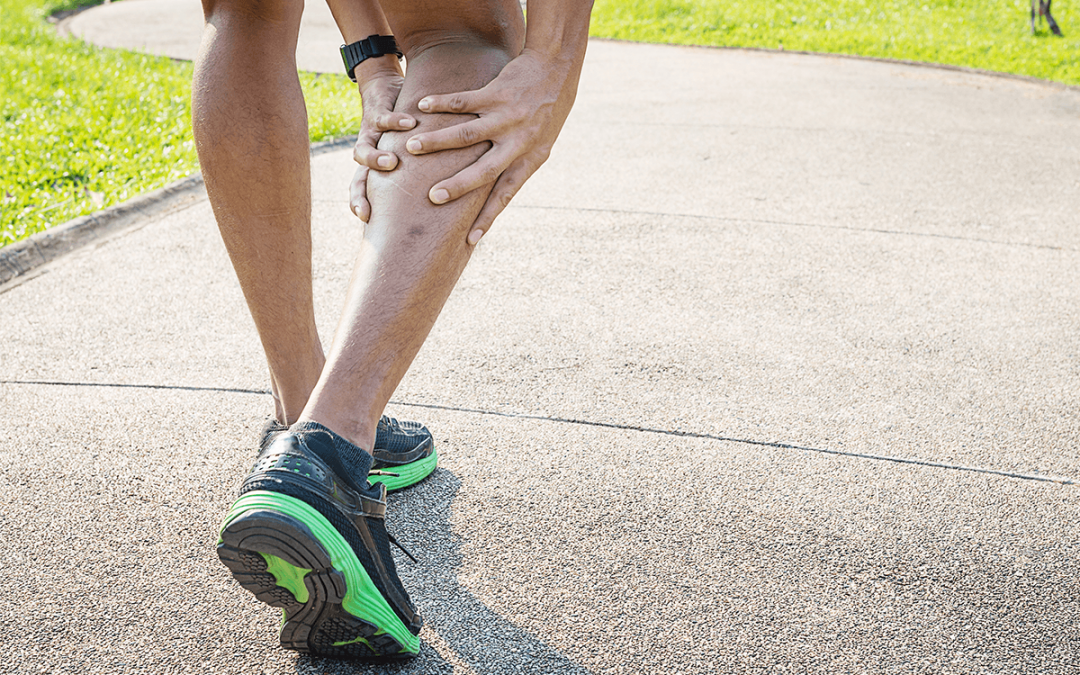There are lots of different niggles that can affect runners. You’re getting into it, upping your mileage, but something keeps getting in your way. It’s those tight calves.
It might cause you discomfort in the days following a run, or it might start to build up and stop you mid-run. Either way, it’s annoying. But it’s also pretty common.
So, let’s dig into why runners get tight calves and what you can do to ease and prevent it.
Are you an employer? Hussle now offer flexible, discounted access to our fitness venues as an employee benefit. Elevate employee wellbeing.
Why do runners get tight calves?
Running is a high impact activity. As you run, you’re pounding the pavement, and that can take a toll on your muscles and your joints. Significant or sudden increases in training often cause muscle tightness and soreness as your body copes with the new stress it’s been placed under.
Some people feel this in their calves. Others feel it in their glutes. And a lucky few might feel nothing at all.
There are a few reasons you might feel particular tightness in your calves. It’s probably not one thing alone but an annoying concoction of a few. Tight calf muscles can be caused by:
Not stretching properly
Running technique
Weak calf muscles
Dehydration
It can be hard to know which is the biggest culprit, so it helps to pay attention to all factors to ease the tension and prevent other issues.
Short-term calve tightness
If your tightness appears at the beginning of a run and then starts to ease or occurs only after a significant increase in distance or frequency, it’s likely you just need to give your muscles a little bit of TLC. Calf stretches and strengthening exercises are your friends here. Use a foam roller if it helps. The calf muscle is integral to running. So, if it’s overused or asked to do a lot, you’re probably going to feel it. Get used to making strengthening and stretching a part of your routine to prevent any longer-term issues.
Chronic calve tightness
If the tightness is more chronic, bothers you more regularly, and doesn’t seem to ease during a run, there’s probably more of an issue at play. It might be the case that your running form means your calves receive more impact and excessive stress. It’s a bio-mechanical thing. The way your foot strikes the ground, the part of your foot that hits the ground, and the way your torso moves as you push off can all contribute to form-induced calf tightness. If you’re worried about your tight calf, it’s always best to talk to a physical therapist or look into gait analysis to determine what might be going wrong.
Don’t forget that, in general, dehydration and the loss of salt throughout the body can cause muscle soreness after exercise—all the more reason to keep a water bottle handy.
How to prevent and ease tight calves
Stretching
Although it feels good immediately, stretching your calves isn’t a quick fix for when you feel a niggle in your muscles. It’s something you need to be regularly doing to increase your range of movement and reduce muscle tension. If you run often, you need to be stretching just as much to reduce the risk of tight muscles in your calves. It’s for treatment but also prevention. Look into improving your flexibility.
Stretching needs to be done when the body is warmed up, so it’s better to stretch your calves after running rather than before. The golden rule about stretching is that it should never be painful. Uncomfortable, maybe, but never painful.
Hold stretches for at least 60 seconds. When static stretching, ease into it and do not bounce. Here are a few of our favourites to help alleviate tension in your calf muscles:
Standing Soleus Stretch
Seated Towel Stretch
Downward Dog Calf Stretch
Strengthening
Strength training can often be overlooked in runners when really, runners need strength work more than anything. Weak muscles are going to start to feel tight and will eventually lead to injury. Maintaining your muscles is as important as the run itself. And arguably, the strength is more important than the stretch. Avoiding tight calf muscles starts right here. If you’re not looking to commit to the gym to do this, you can use Hussle to get day passes or a month pass to any gym near you.
Here are some of our favourite exercise to improve calf strength:
Farmer’s Walk on Toes
Standing Calf Raises
Wall Squat with Calf Raise
Staying Hydrated
A hygiene factor it’s worth mentioning is the importance of staying hydrated when you’re out running. Losing sweat and salt from your body will ultimately lead to decreased performance and is something all runners need to be aware of. Research has shown that a loss of water can often lead to painful muscle cramps, meaning to protect yourself from calf tightness or pain, you want to keep your body topped up with water. If you’re really struggling, try electrolytes too.
Resting when you need to
It’s obvious, but overlooked. Any pain in your muscles needs to be treated with rest. Recovering fully from injury is essential, and doing too much too soon will only make the problem worse.
Take a break from running. As annoying as it is, don’t be tempted to push through. Focus on strength training for a while instead, knowing that when you get back to it, your muscles will be in much better condition to keep you progressive and making up the mileage.



